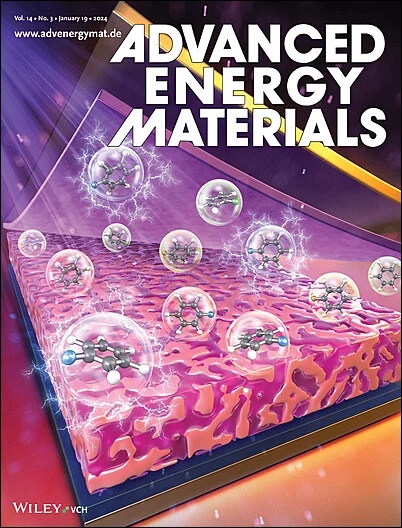光催化析氢与共轭聚合物:结构-性质的见解和设计策略
IF 26
1区 材料科学
Q1 CHEMISTRY, PHYSICAL
引用次数: 0
摘要
半导体聚合物基光催化剂已经成为太阳能驱动制氢的一个有前途的平台,具有可调的光电性能和合成的多功能性。本综述系统地将这些材料分为单组分、多组分和混合系统,这些系统集成了合成和生物组分,每种材料都有不同的结构和机理考虑。在单组分体系中,重点研究了分子极性、主链修饰和电荷传输途径对激子动力学和催化性能的影响。相比之下,多组分系统利用供体和受体材料之间复杂的相互作用,其中形态控制、界面调节和分子间相互作用共同控制电荷传输、重组抑制和催化活性。混合系统通过将半导体聚合物与生物成分相结合,将聚合物光收集能力与生物催化精度相结合,扩展了这些概念。通过在这些类别中建立清晰的结构-性能关系,对聚合物基氢催化剂当前的设计限制和性能瓶颈进行了批判性评估。此外,不仅讨论了材料设计策略,还讨论了先进的光学分析、形貌表征和计算计算(包括机器学习引导的材料发现)在加速下一代光催化剂合理设计中的作用。这篇综述为可持续制氢的高性能聚合物体系的发展提供了一个全面的路线图,将基本的分子设计原理与实际应用联系起来。本文章由计算机程序翻译,如有差异,请以英文原文为准。
Photocatalytic Hydrogen Evolution with Conjugated Polymers: Structure–Property Insights and Design Strategies
Semiconducting polymer‐based photocatalysts have emerged as a promising platform for solar‐driven hydrogen production, offering tunable optoelectronic properties and synthetic versatility. This review systematically categorizes these materials into single‐component, multicomponent, and hybrid systems that integrate synthetic and biological components, each with distinct structural and mechanistic considerations. In single‐component systems, the influence of molecular polarity, backbone modifications, and charge transport pathways on exciton dynamics and catalytic performance is focused. In contrast, multicomponent systems exploit the complex interplay between the donor and acceptor materials, where morphology control, interfacial tuning, and intermolecular interactions collectively govern charge transport, recombination suppression, and catalytic activity. Hybrid systems extend these concepts by integrating semiconducting polymers with biological components and combining polymeric light‐harvesting capabilities with biocatalytic precision. By establishing clear structure–property relationships across these categories, the current design constraints and performance bottlenecks in polymer‐based hydrogen catalysts are critically assessed. Furthermore, not only material design strategies but also the role of advanced optical analysis, morphology characterization, and computational calculations (including machine learning‐guided materials discovery) in accelerating the rational design of next‐generation photocatalysts are discussed. This review provides a comprehensive roadmap for the development of high‐performance polymeric systems for sustainable hydrogen production, bridging fundamental molecular design principles with practical applications.
求助全文
通过发布文献求助,成功后即可免费获取论文全文。
去求助
来源期刊

Advanced Energy Materials
CHEMISTRY, PHYSICAL-ENERGY & FUELS
CiteScore
41.90
自引率
4.00%
发文量
889
审稿时长
1.4 months
期刊介绍:
Established in 2011, Advanced Energy Materials is an international, interdisciplinary, English-language journal that focuses on materials used in energy harvesting, conversion, and storage. It is regarded as a top-quality journal alongside Advanced Materials, Advanced Functional Materials, and Small.
With a 2022 Impact Factor of 27.8, Advanced Energy Materials is considered a prime source for the best energy-related research. The journal covers a wide range of topics in energy-related research, including organic and inorganic photovoltaics, batteries and supercapacitors, fuel cells, hydrogen generation and storage, thermoelectrics, water splitting and photocatalysis, solar fuels and thermosolar power, magnetocalorics, and piezoelectronics.
The readership of Advanced Energy Materials includes materials scientists, chemists, physicists, and engineers in both academia and industry. The journal is indexed in various databases and collections, such as Advanced Technologies & Aerospace Database, FIZ Karlsruhe, INSPEC (IET), Science Citation Index Expanded, Technology Collection, and Web of Science, among others.
 求助内容:
求助内容: 应助结果提醒方式:
应助结果提醒方式:


